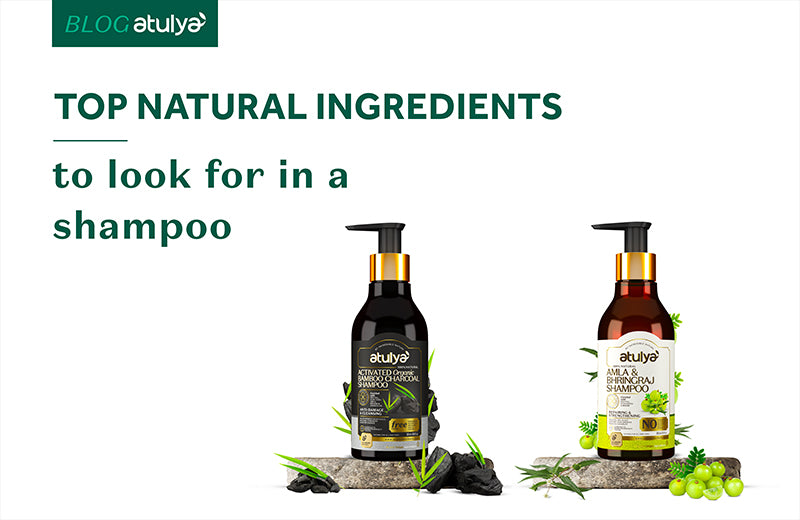Why Tanning Happens: A Guide for Every Skin Type
Have you ever walked outside on a sunny day and felt your skin slowly darkening? Tanning is actually a natural defense mechanism our skin uses to shield us from the sun's harmful rays. But it’s more than just achieving that summer glow, it’s a scientific process that can differ greatly from one person to another.
In this blog, we’re going to explore what truly causes skin tanning, how various skin types respond, and the best ways to take care of your skin, including some reliable natural solutions from atulya.
What Causes Skin Tan?
Tanning is basically your skin's way of protecting itself from UV (ultraviolet) radiation. When you soak up some sun, it triggers special cells in your skin called melanocytes to crank out more melanin, the stuff that gives your skin its color. This boost in melanin is what makes your skin look darker after spending time in the sun. Think of melanin as your skin's own natural sunscreen; it helps absorb and scatter those harmful UV rays, lowering the chances of serious skin damage. There are two main types of UV rays to keep in mind.
UVA rays dive deep into the skin and are largely responsible for causing premature ageing and pigmentation problems. On the other hand, UVB rays target the outer layers of your skin and directly kickstart melanin production, which leads to skin tanning and sometimes even sunburn. And here's a fun fact: UV rays can still reach your skin on cloudy days as they can sneak through the clouds and bounce off surfaces like water and sand.
How Tanning Affects Different Skin Types?
Body tanning is something we all experience, but how it affects your skin can really vary depending on whether you have oily, dry, combination, or sensitive skin. Understanding your skin types helps you understand the reasons for skin tanning and picking the right products.
Oily Skin
If you have oily skin, your sebaceous glands are probably working overtime, cranking out extra sebum. While this natural oil can sometimes give your skin a nice, sun-kissed glow, don’t let that fool you—oily skin is just as susceptible to UV damage as any other type. In fact, excess oil can attract more dirt and pollutants, which can lead to clogged pores and uneven tanning. Plus, the oil can mess with how UV rays hit your skin, resulting in patchy tanning.
Product Tip: To help balance your oily skin after sun exposure, give atulya Neem & Tea Tree Face Wash a try. It cleanses gently, controls oil and refreshes your skin without leaving it feeling dry.
Dry Skin
Dry skin doesn't have enough natural oils, making it more susceptible to flakiness, roughness, and sensitivity, especially when the sun's out. Without that protective layer of sebum, UV rays can get in more easily, causing quicker moisture loss and leaving you with a dull, uneven tan. It's common for dry skin to tan in patches, which can give it an uneven and tired appearance.
Product Tip: Use CICA & HYALURONIC ACID SUNSCREEN SPF 50 PA++++ Sunscreen to protect from UVA and UVB rays. Its aqua light gel formula soothes the itchiness of dry skin and heals uneven skin tone.
Combination Skin
If you have combination skin, you’ve likely noticed that some parts of your face tan quicker than others. Usually, the T-zone, your forehead, nose, and chin tend to be oilier and can darken more rapidly, while your cheeks and other areas might remain drier and more sensitive. This can lead to causes of tanning on face and a bit of mixed texture on your skin.
Sensitive Skin
If you have sensitive skin, you probably know how it can really react to sun exposure. It often results in redness, irritation, and inflammation, not to mention pesky tanning. Since the natural barrier of your skin is already quite fragile, those UV rays can easily cause discomfort and noticeable damage.
Easy & Effective Tan Removal Tips
Sun-kissed complexion is admired in western culture; however, excessive tanning can result in uneven skin tone and premature aging. The silver lining? You can successfully fade your tan and regain your natural color with a combination of care, consistency, and natural remedies. Here are some tried-and-tested tips:
1. Exfoliate Properly
Routine exfoliation does remove dead cells, such as those pigmented by excessive melanin. Choose gentle scrubs with natural particles like walnut shell, oats, or coffee ground. Do not use rough abrasives because these can be inflammatory to the skin, particularly sun-stressed skin.
2. Hydrate and Moisturize
Sunlight dries out your skin’s natural moisture, which dulls the tan and makes it patchy. Apply a hydrating moisturizer with aloe vera, hyaluronic acid, or glycerin to replenish moisture and aid in skin renewal. atulya's Aloe Vera Gel is a good natural alternative!
3. Natural De-Tanning Masks
Nature has ingredients that are packed with tan-fighting solutions. Homemade DIY face packs with the following ingredients work wonders:
-
Tomato pulp, which is packed with lycopene.
-
Curd and turmeric, both brightening and soothing.
-
Lemon juice and honey, mild bleaching action and moisturizing.
Use these face packs for 2-3 weeks to see visible results. Always remember to moisturize afterwards to lock in the hydration.
4. Stay Super Hydrated and Eat Healthy
Healthy skin starts from within. Drink plenty of water and include antioxidant-rich foods like citrus fruits, berries, and green tea in your diet. They help repair sun damage and promote radiant skin.
Eat flaxseeds, walnuts, and fatty fish rich in Omega-3 to help strengthen the skin barrier and nuts, seeds, and whole grains rich in skin-healing properties.
5. Skipping Sunscreen is Not an Option
The most effective approach to skin tanning is preventing it from occurring in the first place! Use a broad-spectrum sunscreen with an SPF of 30 or more every day even when it's cloudy or you're indoors. Use it again after two hours if you're going to be outside for an extended time. Sunscreen not only acts as protection against new tanning but also prevents additional skin damage while your current tan wears off.
Use atulya Vitamin C & D’ Panthenol SPF 50, PA++++ Sunscreen religiously on your face and neck, wear full sleeves and you are all set to beat the sun!
Use atulya’s Natural Solutions
For a hassle-free, efficient regimen, look into atulya's collection of incredible skin care products. The de-tan face wash, brightening serums, and hydrating gels contain plant extracts that break down tans and revitalize skin gently without any harsh chemicals.
Frequently Asked Questions (FAQs)
1. What causes tanning of skin?
Body tanning can be caused due to multiple reasons – exposure to UV rays, melanin production due to hormonal imbalances, and skin issues.
2. How much time does it take to fade suntan?
Mild to moderate tanning fades within 1-4 weeks. A deep tan on the other side can take several months to completely disappear.
3. Which sunscreen is best to prevent tanning?
You can use atulya Vitamin C & D’ Panthenol SPF 50, PA++++ sunscreen to reduce dullness and protect from sun.




